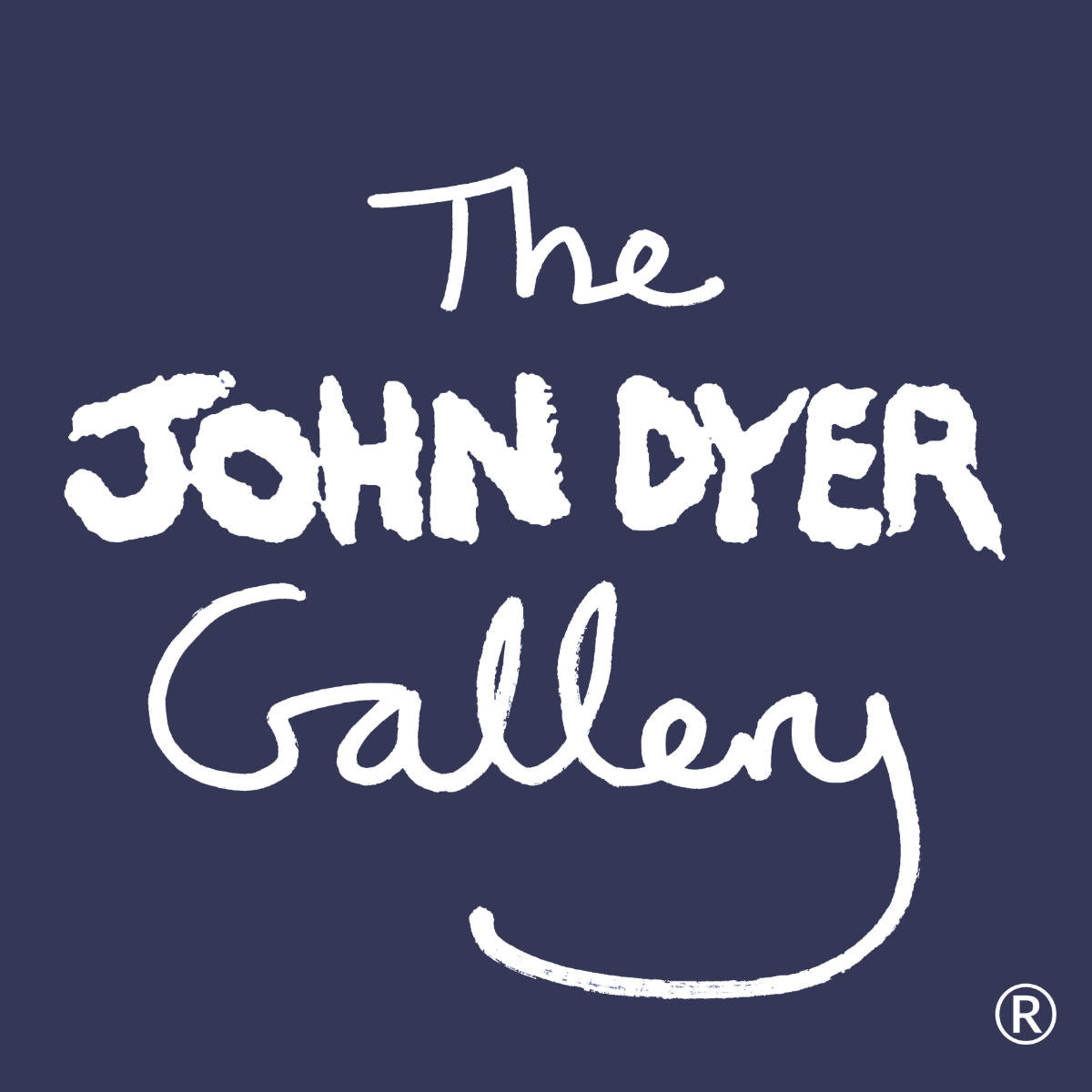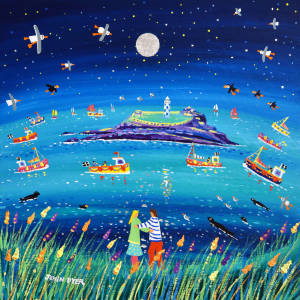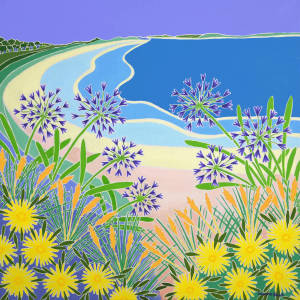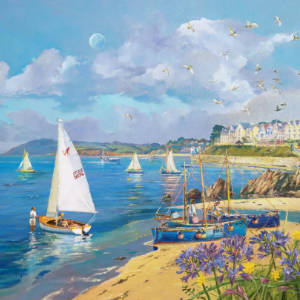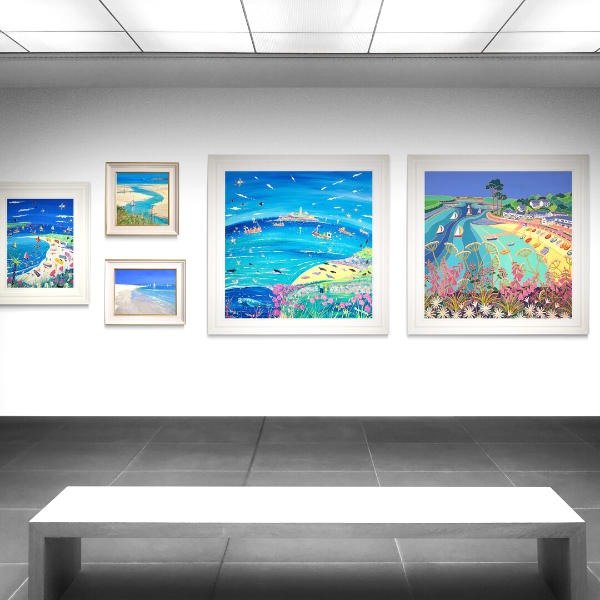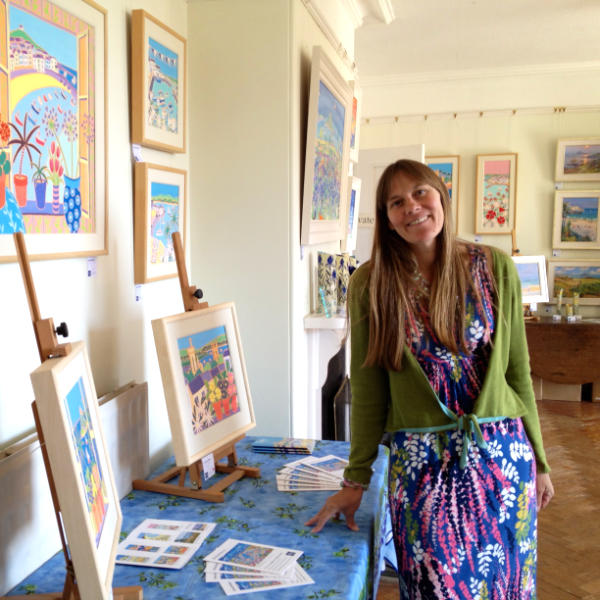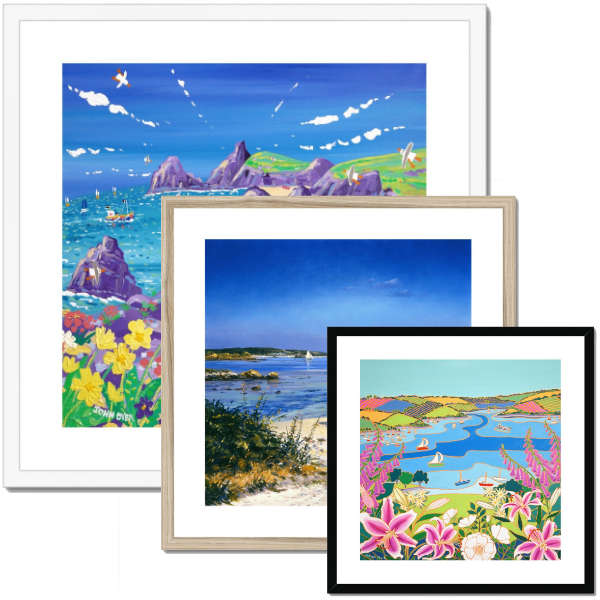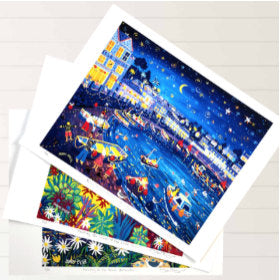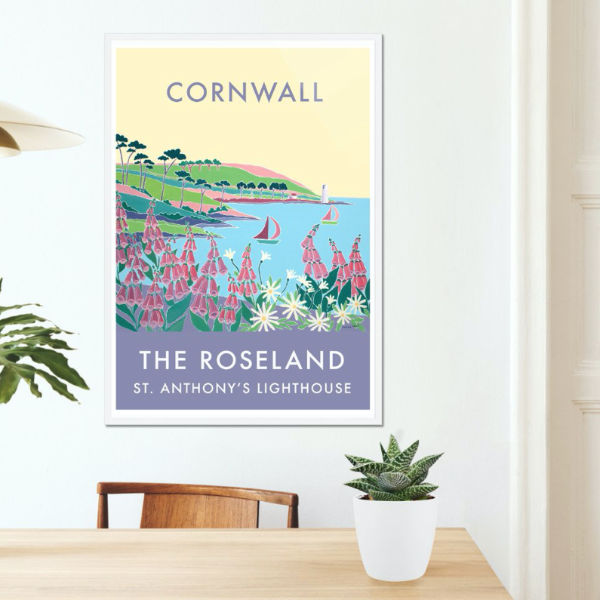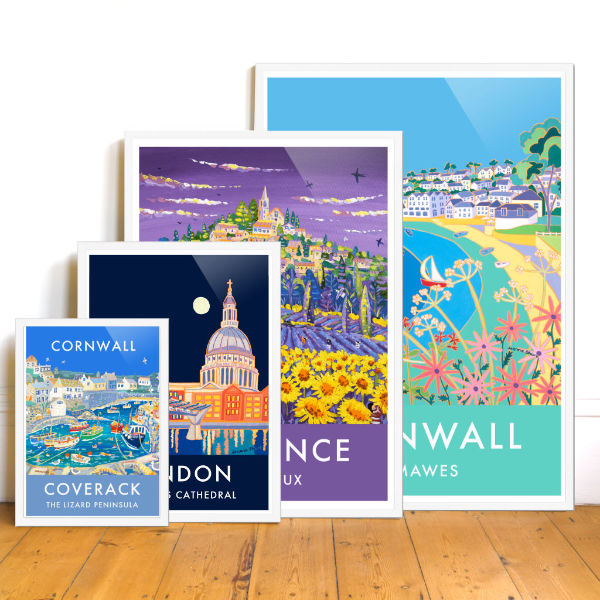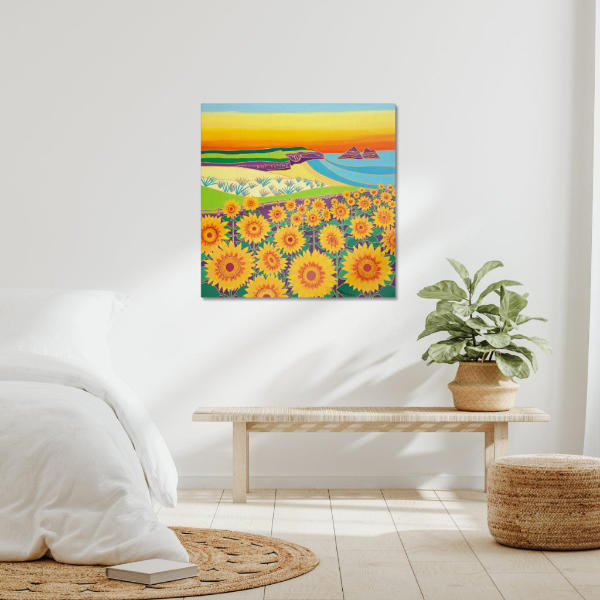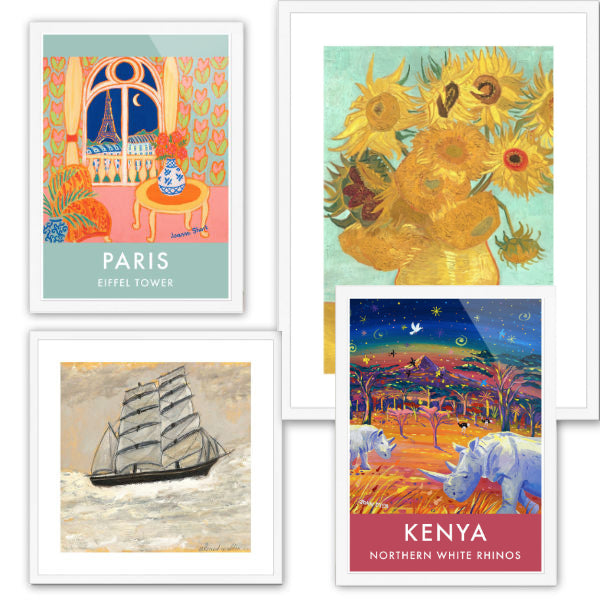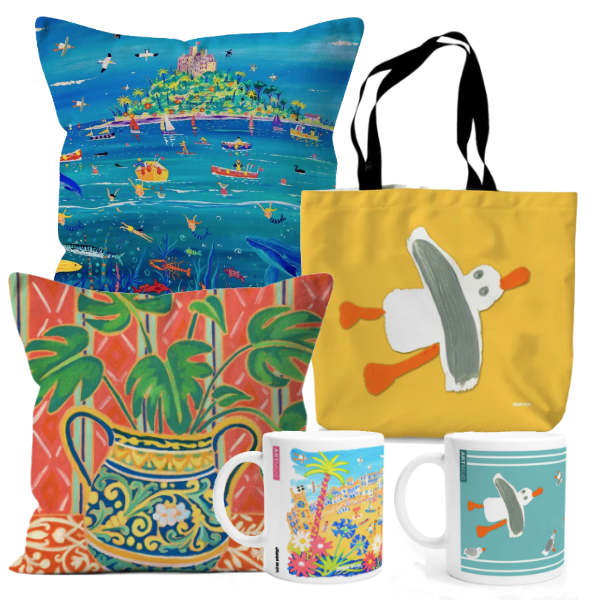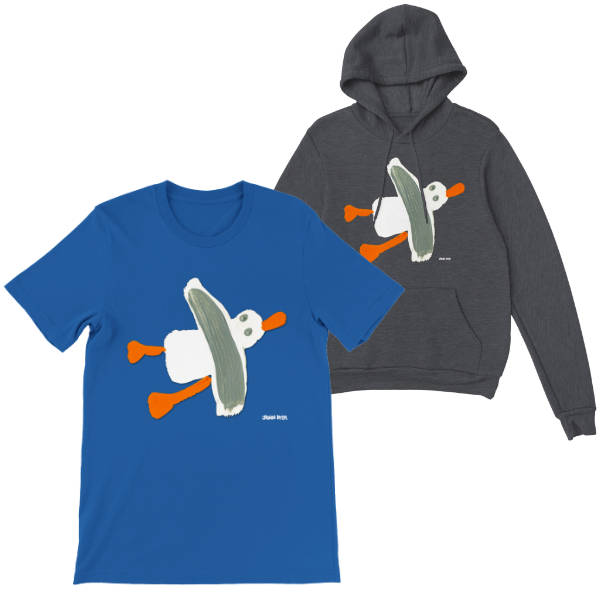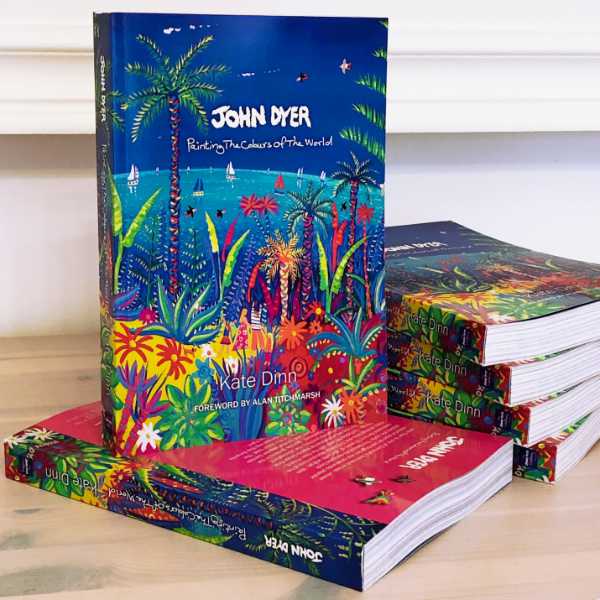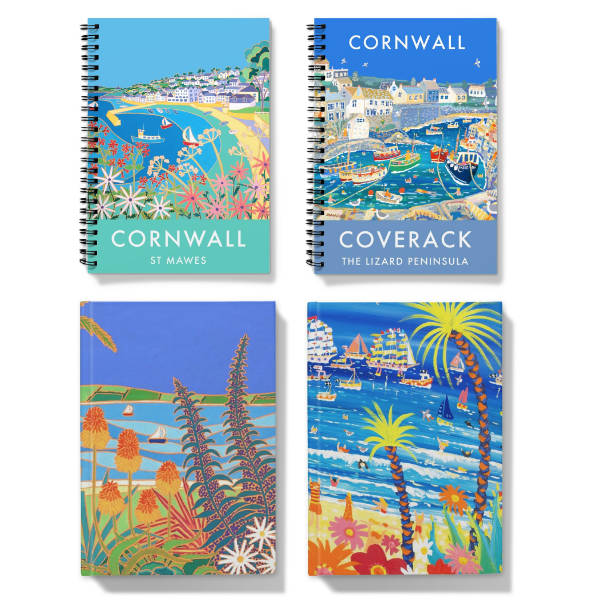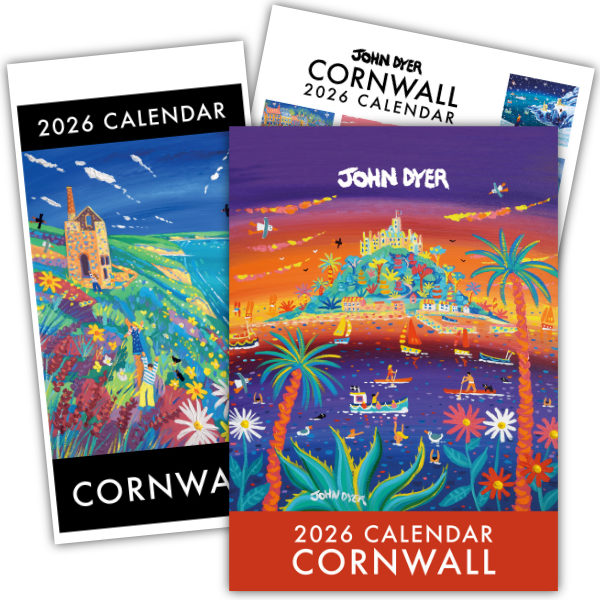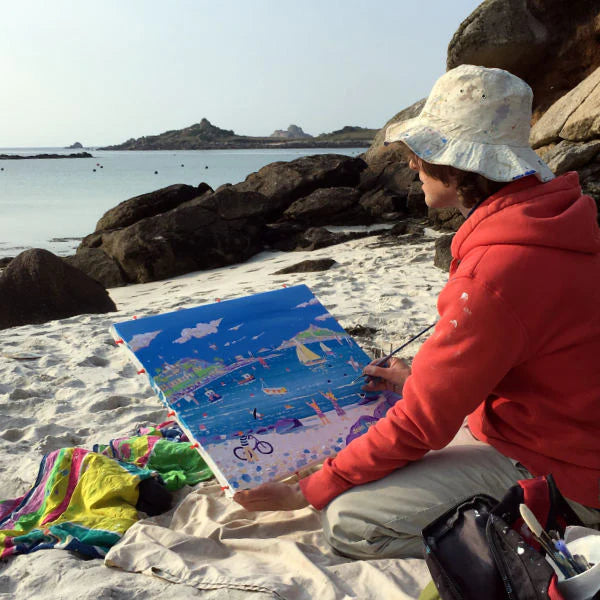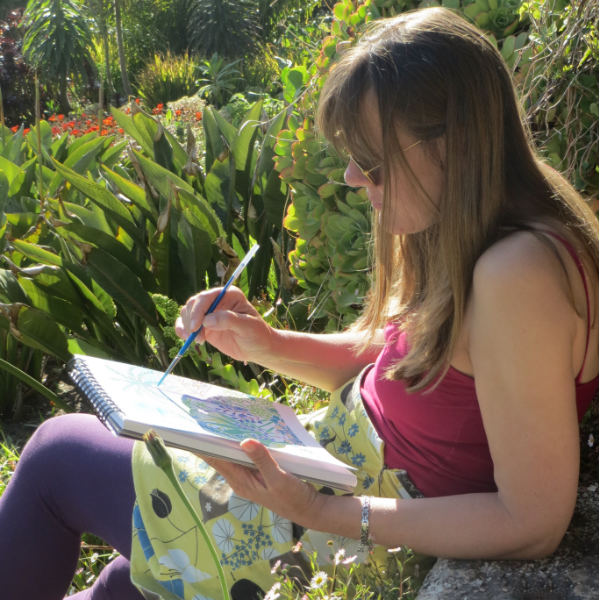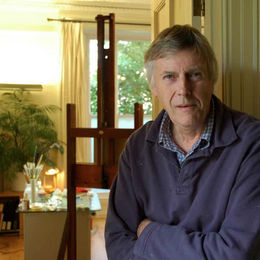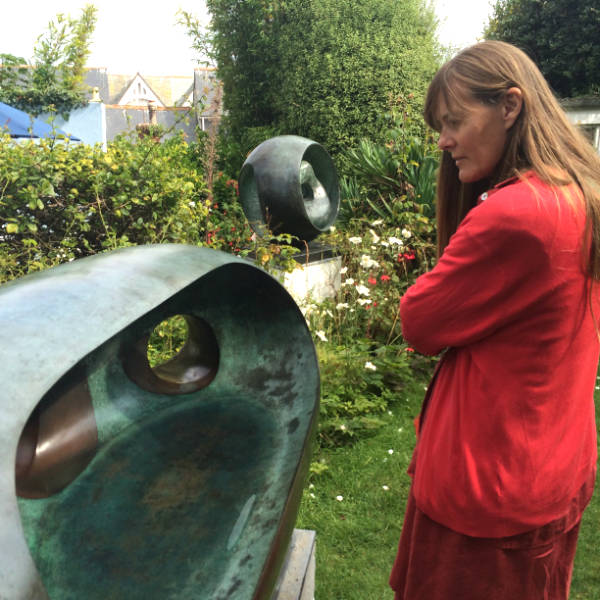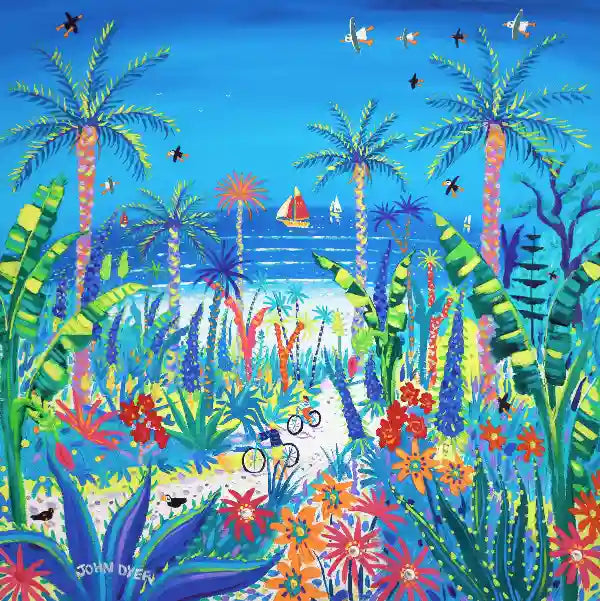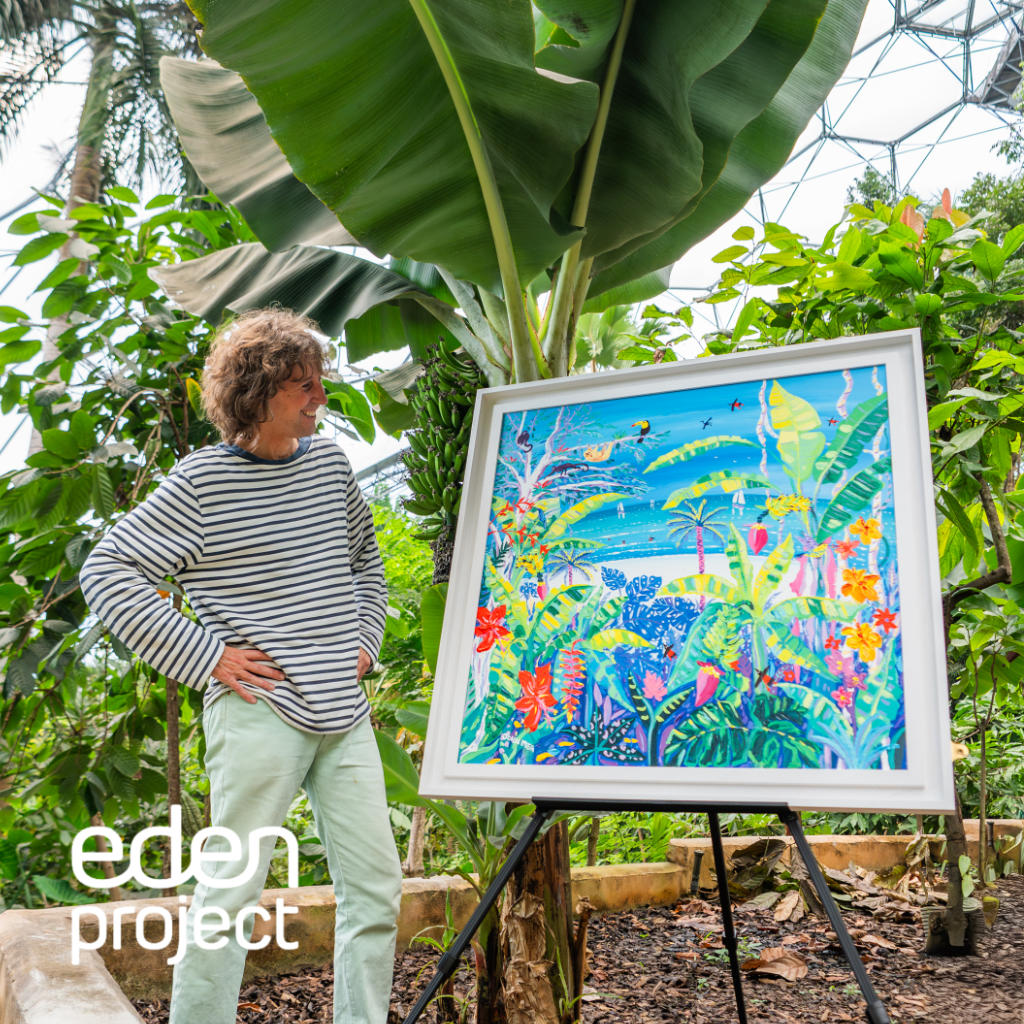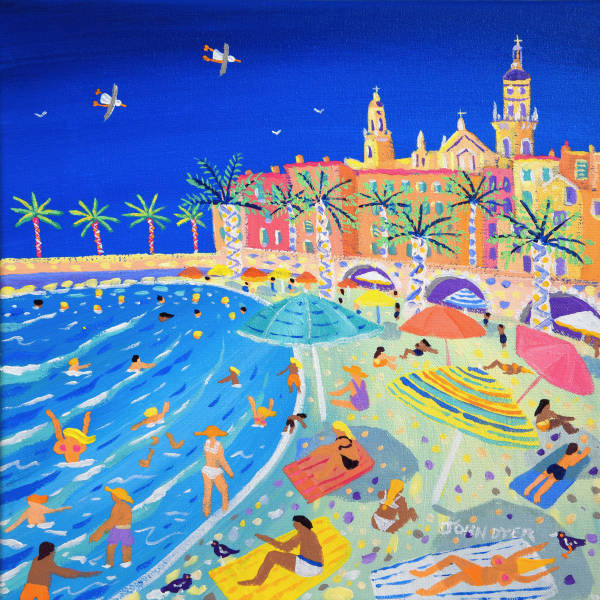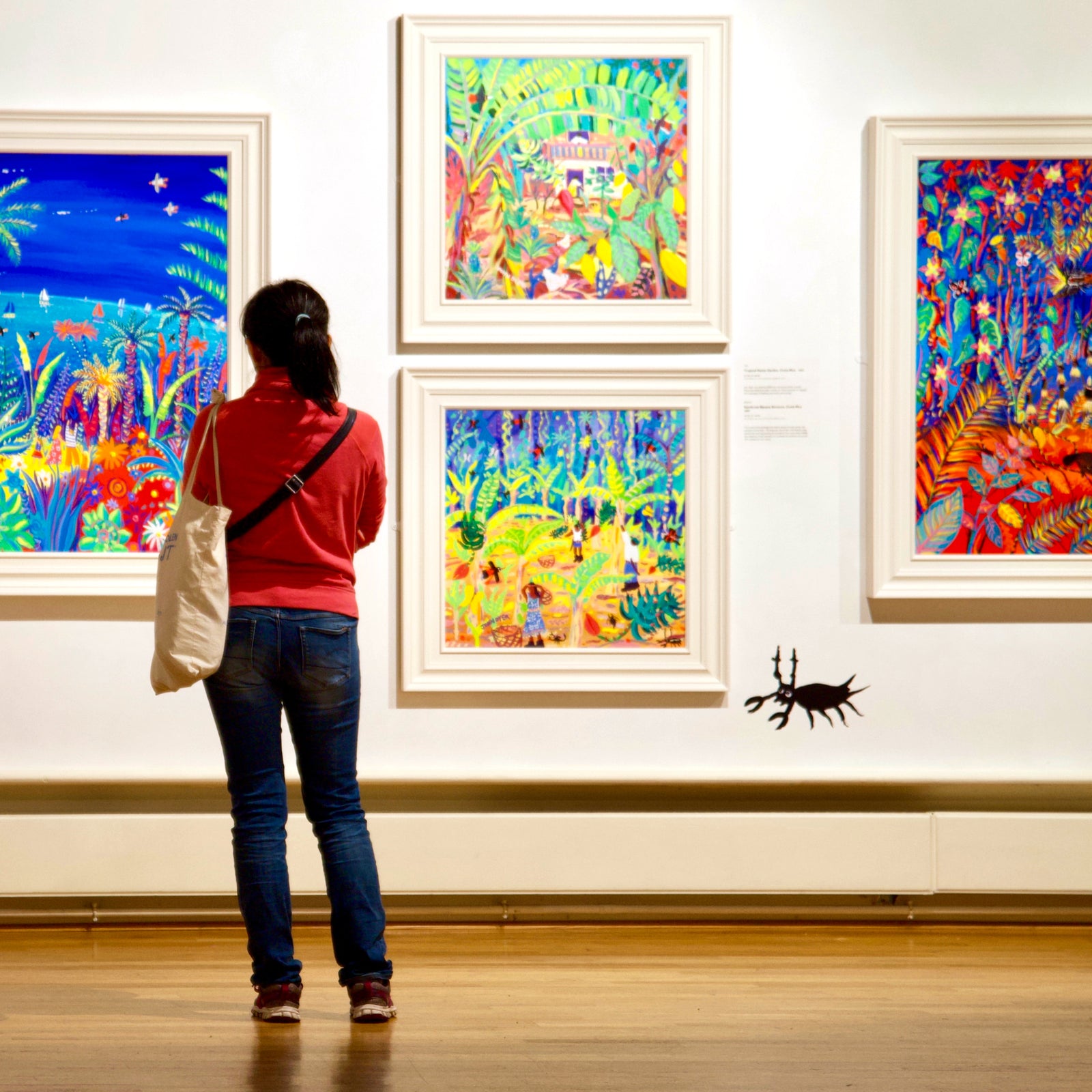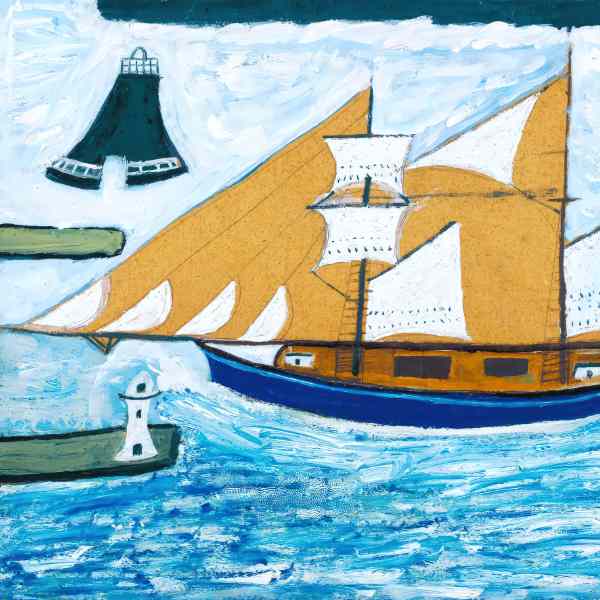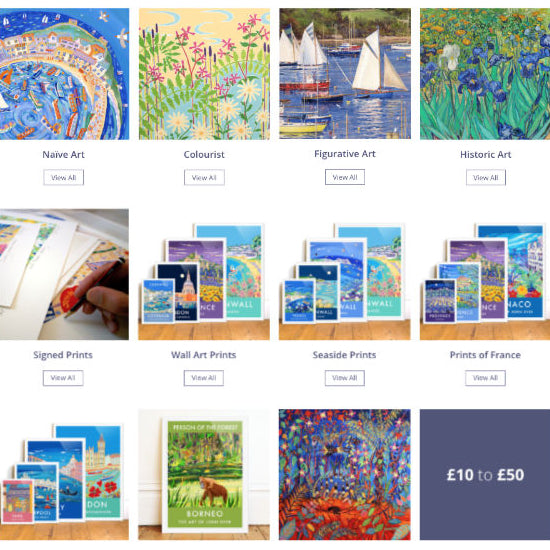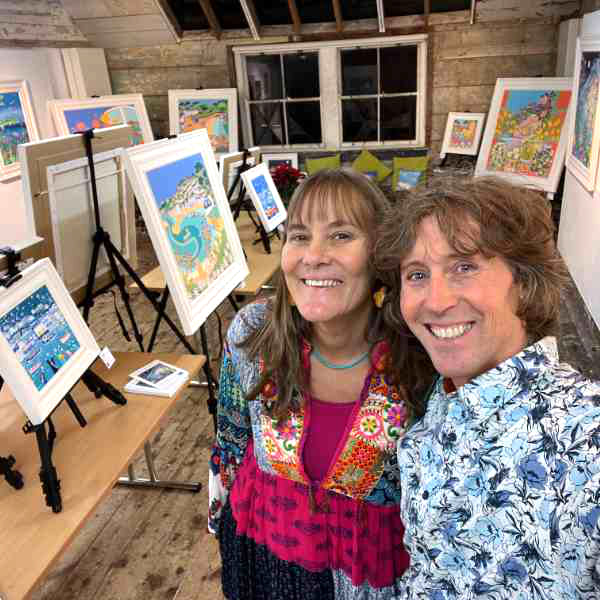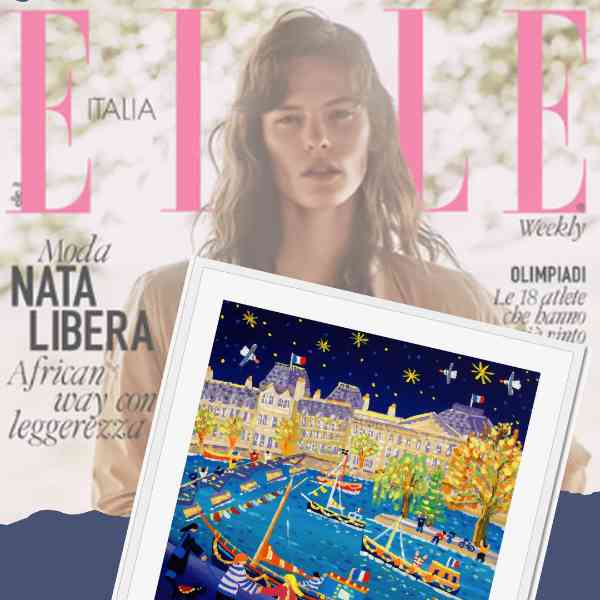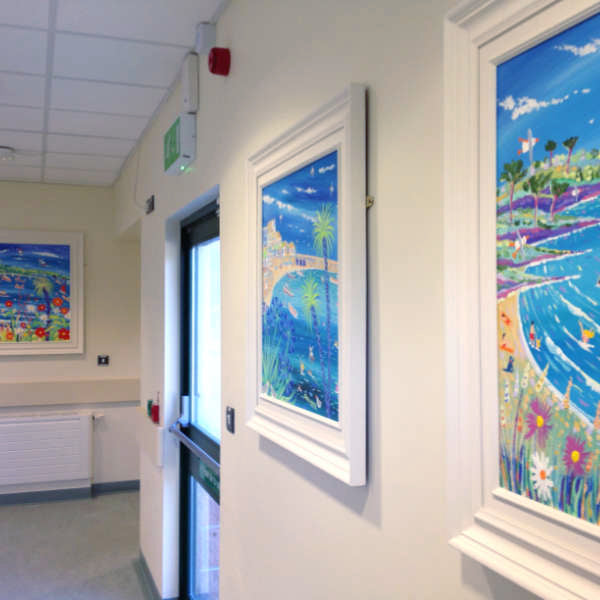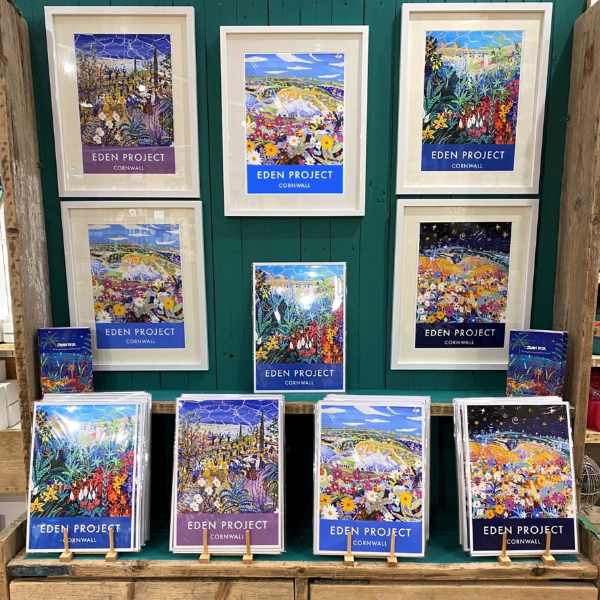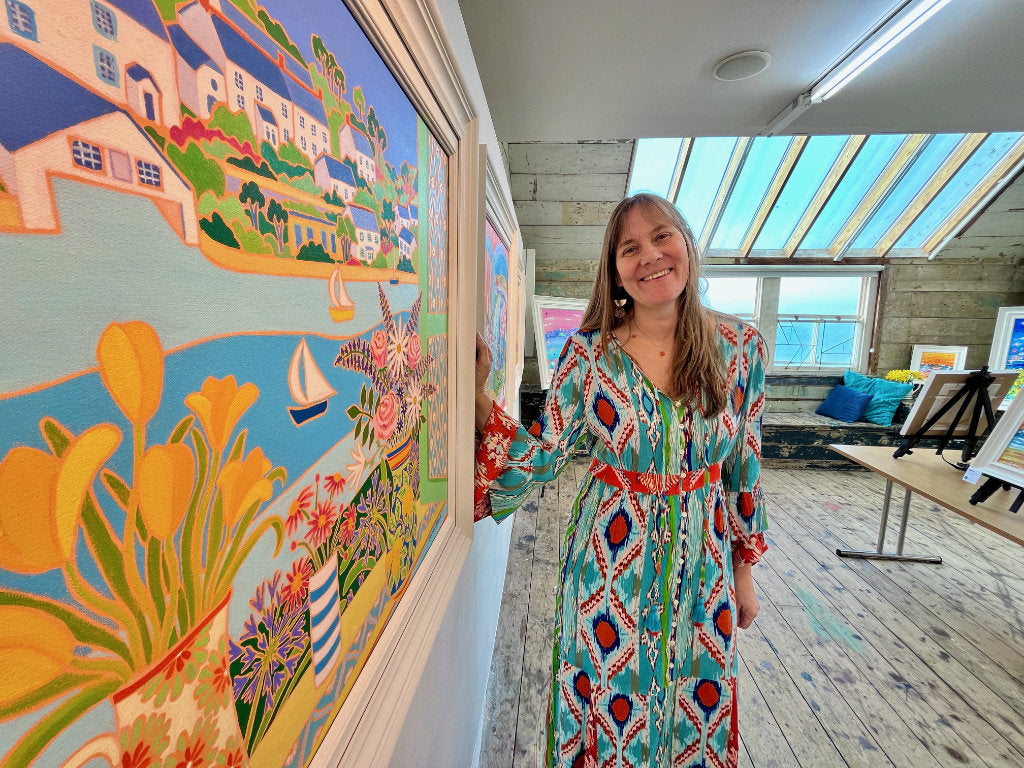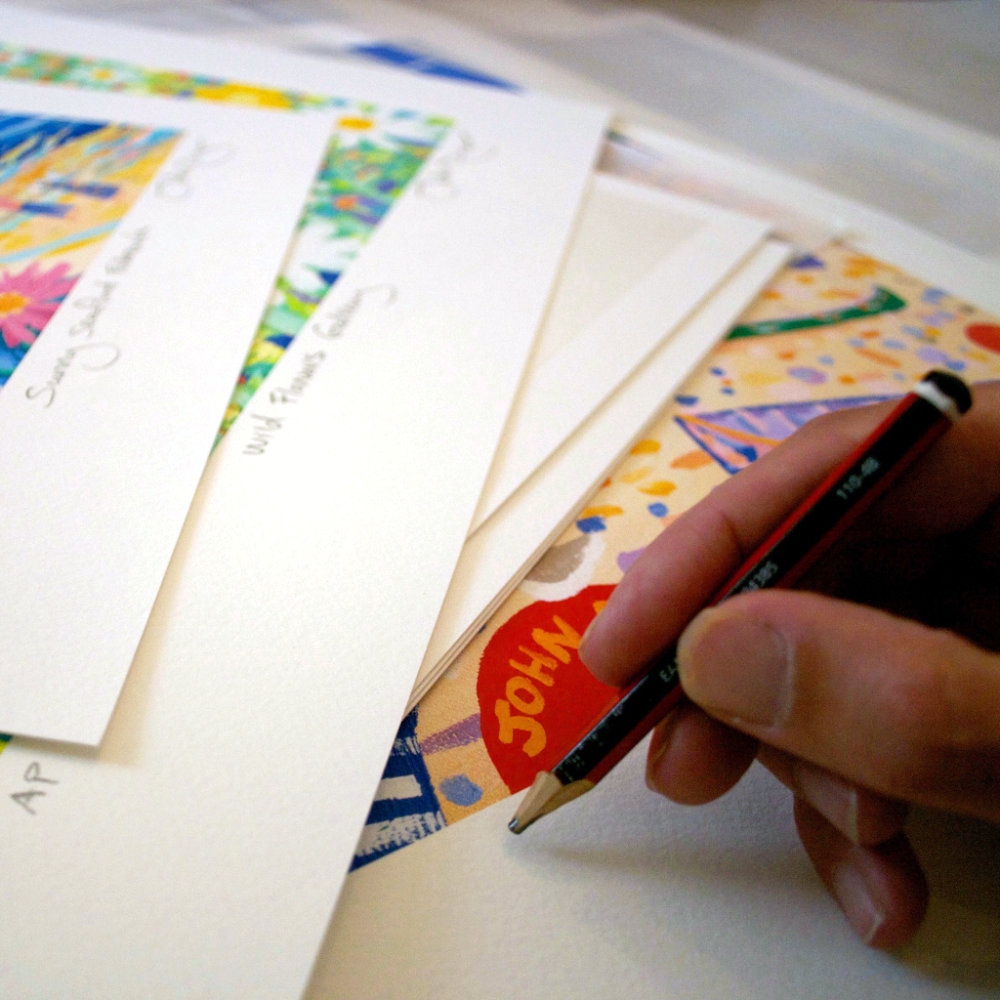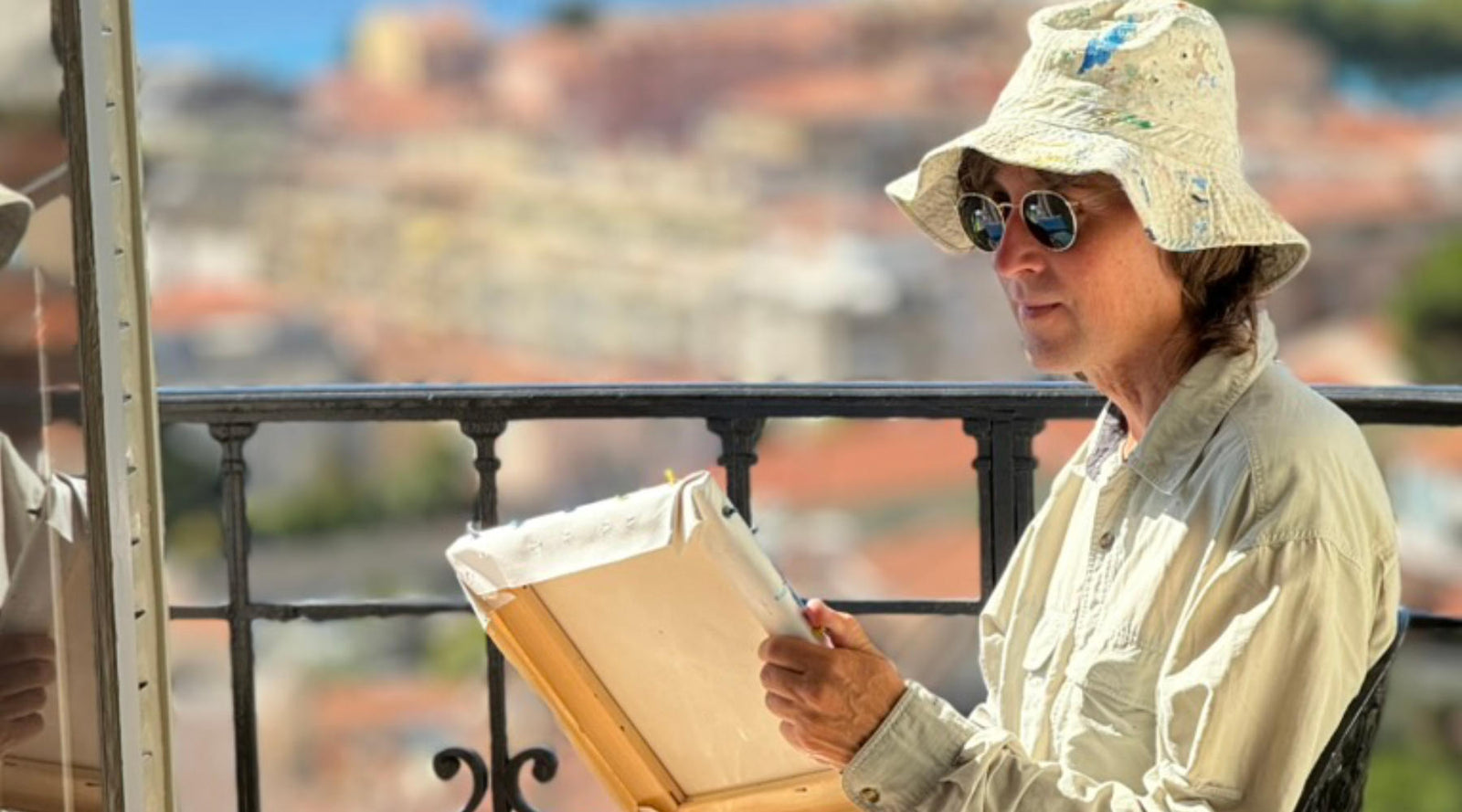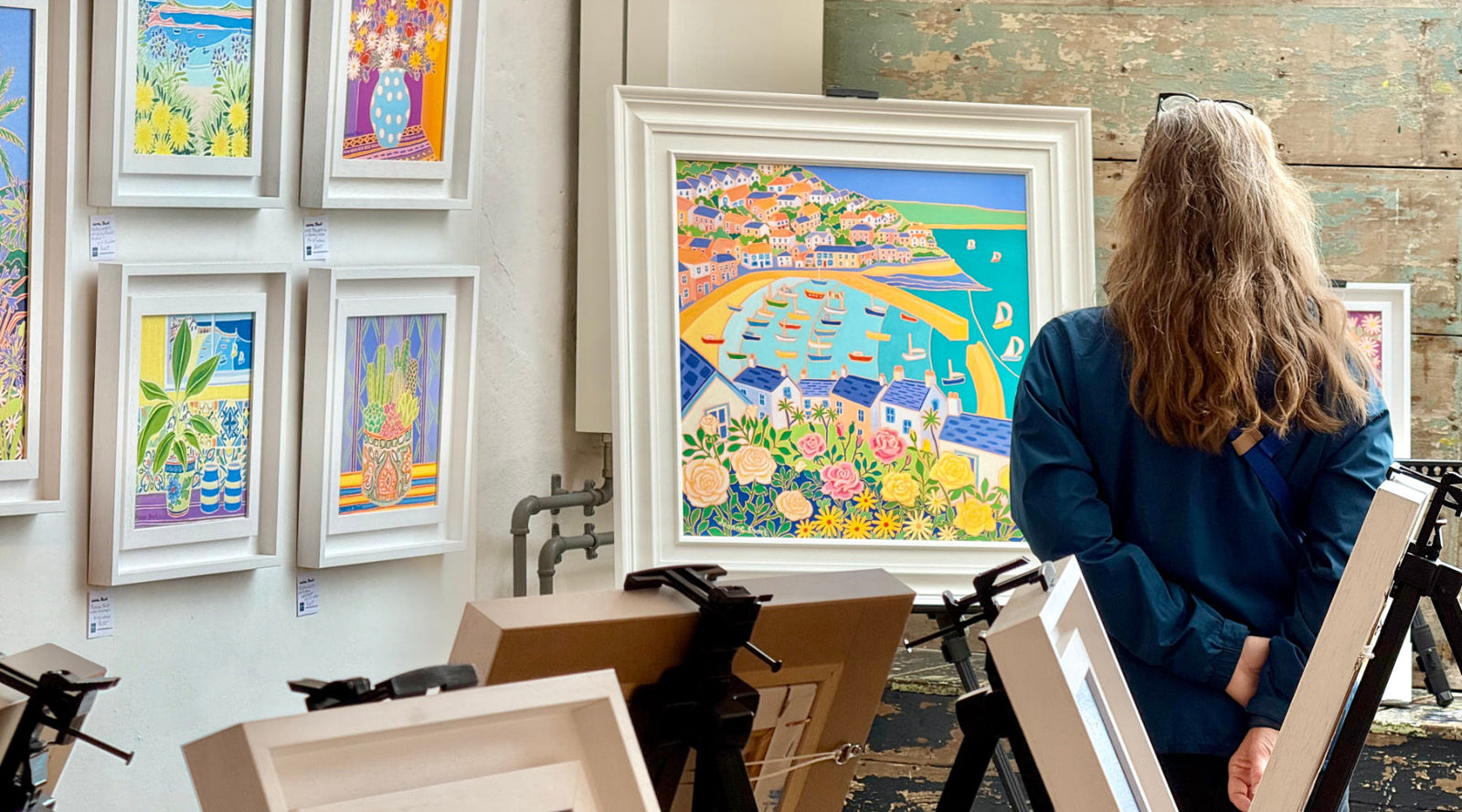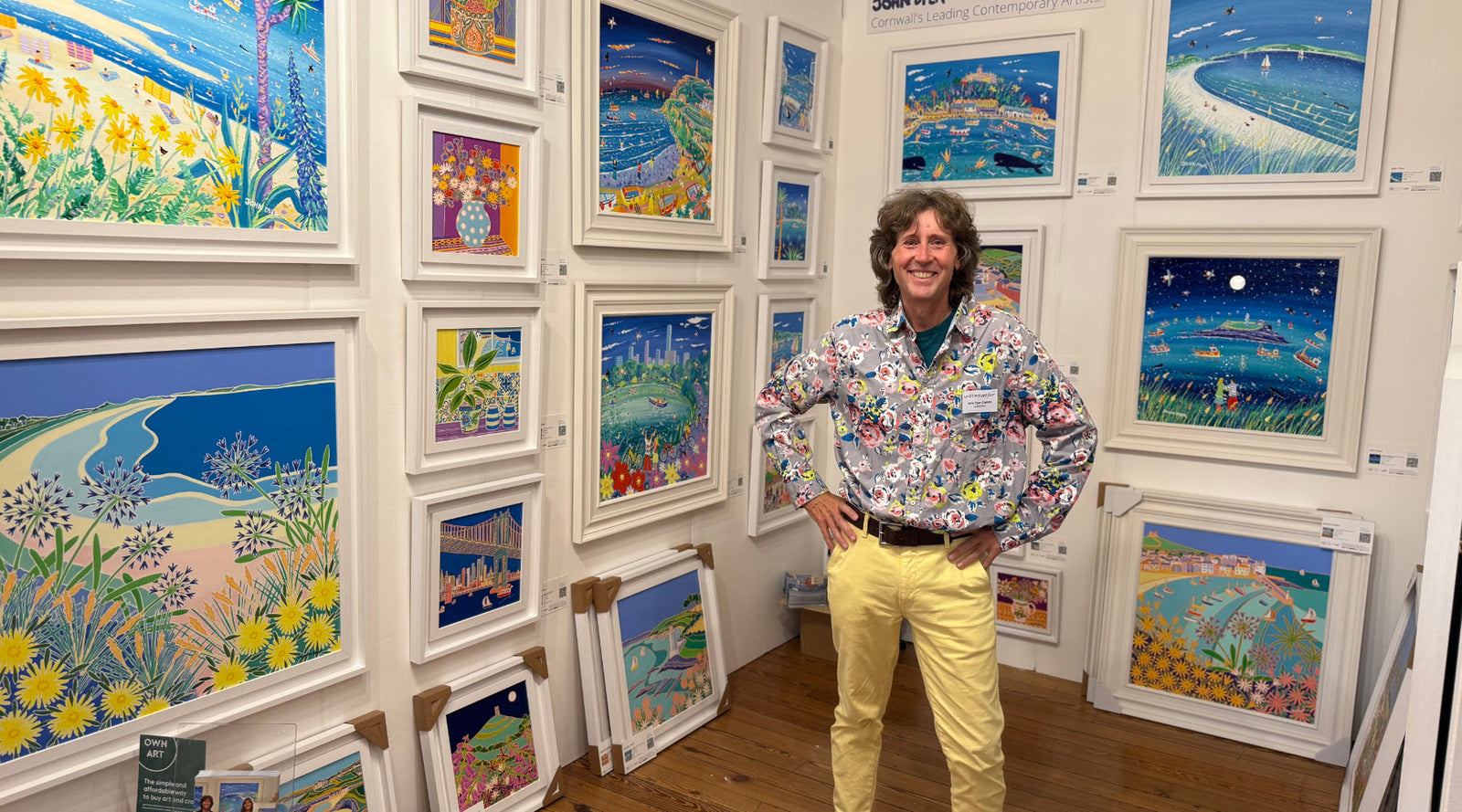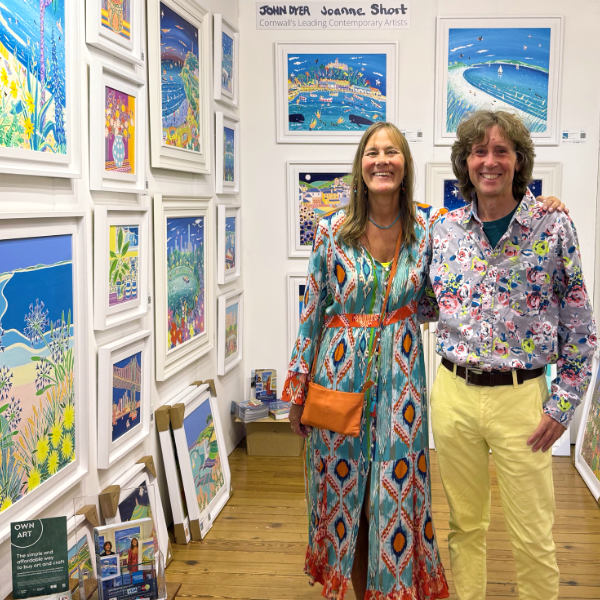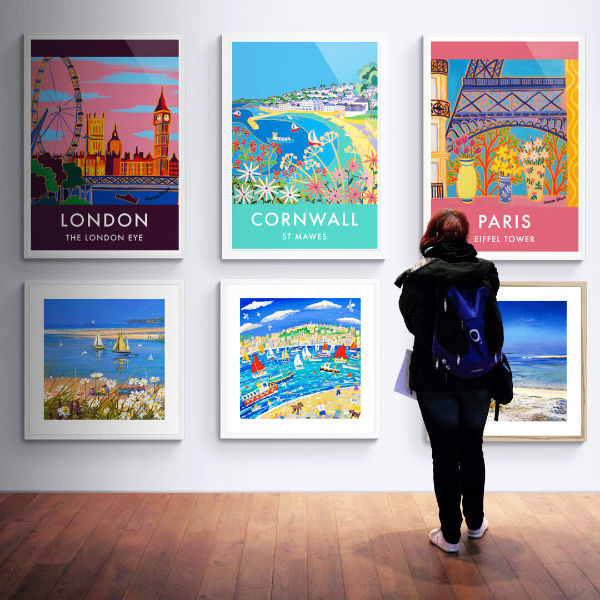
Above: Cornish artist John Dyer, one of the most collected contemporary artists in Cornwall, with an abstract painting by Patrick Heron (1920 - 1999), one of the leading artists of the 1950s
When you invest in paintings – is it worth it? Cut through the complexity with our essential guide on art investments. We’ll help you understand the key factors that drive the value of art, identify the risks, and seize on the right opportunities in both traditional and digital art markets. From assessing the potential of emerging artists to safeguarding your investment’s value over time, we navigate you through the practical steps for integrating art into your investment strategy.
N.B. This article is not investment advice and you should do your own research before investing in any asset class.
Key Takeaways
-
Art investment provides a unique blend of tangible asset enjoyment and financial appreciation potential, but investors should be mindful of risks such as market volatility, personal taste, and tax implications.
-
The art market landscape offers various avenues for investment including both emerging and established artists, where value is influenced by factors such as artist reputation, subject matter, and market trends. Diversification can include digital and physical art, each with distinct considerations for authenticity and management.
-
Protecting and managing art investments is crucial, with appropriate storage, insurance, regular appraisal, valuation, and understanding the tax and estate planning implications all playing a part in preserving the value and legacy of an art collection.
The Allure of Art Investment
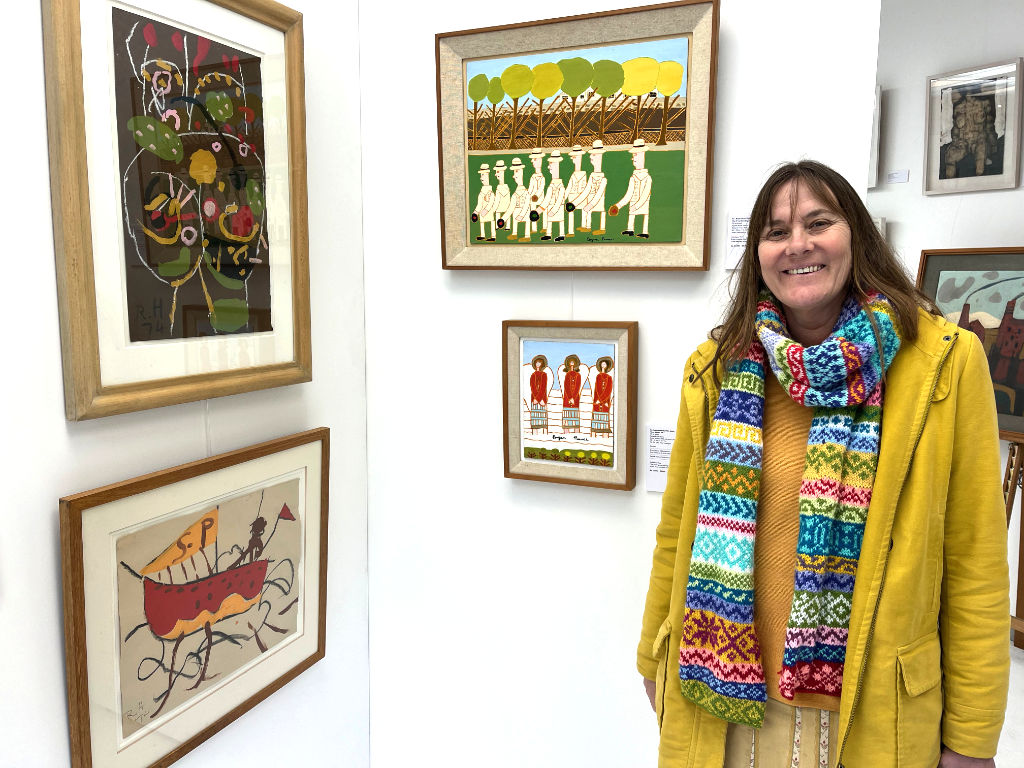
Above: Contemporary Cornish artist Joanne Short, one of the leading and investable colourist artists of her generation, standing with paintings by Cornish historic St Ives artists Bryan Pearce and Roger Hilton.
Art investment offers a unique blend of tangible assets and potential financial returns. Unlike stocks and bonds, art is a tangible asset that provides aesthetic enjoyment and that can also appreciate in value over time, often remaining unaffected by fluctuations in the stock market, but remember that with all investments there is no crystal ball guaranteeing that the art your choose will appreciate in value. The potential financial benefits of investing in art can manifest over time due to factors such as the artist’s growing reputation, the quality and provenance of the artwork, and its alignment with cultural trends. However, as with any investment, the art world is not without its risks. Investors should consider the non-liquidity of art and be aware of market risks, personal taste, intention behind investing, and tax implications before proceeding.
"I remember with great joy the day when I sold my first painting over thirty years ago to a collector and investor in the primary art market. It was a new painting of mine. On that same day, I also invested in a painting from the secondary art market, which was pre-owned. This painting was by the Cornish artist Jack Pender (1918 - 1998), and I have enjoyed it every day for the past thirty years.
Shortly after that, I met Jack Pender by chance in the pub in Mousehole, and we discussed paintings and buyers. He said he prayed for people like me - people who would buy his paintings. It is a lovely memory of a great Cornish artist. The painting has been an excellent investment for my home, wellbeing, and family. It has also increased in value. However, I believe one should invest in art that they want to be with and benefit emotionally from daily rather than hoping for profit.
I am sure that my first buyer has had many decades of joy from my first painting sale, too."
For many, the art market may seem exclusive and inaccessible. But the reality is quite different. With a variety of investment options catering to different budgets, the art market has become more accessible than ever. Technological advancements have introduced innovative methods for investing in art, attracting a more diverse and younger group of enthusiasts who are keen to engage in the art market. From art galleries showcasing and promoting artworks like JohnDyerGallery.com to art funds offering a diversified art portfolio, the options are numerous for both seasoned and novice investors.
The Art Market Landscape
Grasping the intricacies of the art market landscape significantly aids in making well-informed investment decisions. The value of an artwork is influenced by various factors, including the reputation of the artist, subject matter, and market trends. The reputation of an artist, for instance, plays a significant role in determining the profitability of an art investment, as it greatly influences the value and demand for their artworks. Certain genres of art, such as Modern and Post-War and Contemporary art, are currently the most profitable and stable genres in the art market.
The subject matter of a painting can also significantly influence its investment value. Certain subjects, such as well-known figures or female subjects, can be more appealing, attracting more potential buyers and investors. Knowledge of the art world is of great importance for investors as it enables them to recognize potential successful artworks and stay abreast of market trends, thereby ensuring well-informed investment choices. Navigating the art market landscape effectively can be the difference between a good investment and a great one.
Art as a Tangible Investment
An investment in art offers:
-
A tangible asset for enjoyment and admiration
-
Potential for financial growth and appreciation over time
-
Personal enjoyment from a financial and aesthetic perspective
-
The ability to start with just one or two carefully chosen pieces
Art as an investment is a great way to combine aesthetic enjoyment with the potential for financial gain.
The inclusion of digital art in an investment portfolio offers additional potential benefits. It is easily transportable and storable. When combined with Non-Fungible Tokens (NFTs), it provides a dependable means of authenticating authorship and ownership. Investing in digital art can be an exciting way to diversify your portfolio and stay at the forefront of emerging trends.
Identifying Potential Investment Opportunities
To identify potential investment prospects in the art world, one must possess a discerning eye, conduct in-depth research, and foster an appreciation for art. When considering an investment in emerging artists, various factors such as:
-
undiscovered talent
-
an emerging career
-
originality
-
quality of ideas, materials, skill, and ability
-
integrity and commitment
need to be taken into account. Furthermore, prudent budgeting is necessary to ascertain that the investment aligns with one’s financial capacity.
Art fairs and galleries are pivotal platforms in the realm of art investment. They bring together both primary and secondary markets, providing a platform for galleries to exhibit their top artists and pieces. This allows collectors to view a diverse range of art in a single location, assisting investors in identifying promising artwork and artists. These platforms provide an excellent opportunity to:
-
Discover new talents and trends
-
Network with other art enthusiasts and professionals at art fairs
-
Learn more about the art market and industry with galleries
Art fairs and galleries are invaluable resources for both novice and seasoned art investors, as well as art collectors, in the fine art market.
Emerging Artists vs. Established Names
Investors willing to take a risk may find high returns in the fresh perspectives and innovative ideas brought forth by emerging artists. However, the reputations of emerging artists may not endure, which could affect the value of their artworks. On the other hand, established artists, such as renowned Cornish artists John Dyer and Joanne Short, posses a robust reputation and are extensively collected, offering potentially a more stable investment option. The stunning oil pantings by Ted Dyer,painted from 1989 onwards are highly collectable. The paintings by our artists have great potential for investment and future growth over time.
Blue-chip prints and multiples have a well-established history of delivering stable returns and are generally perceived as low-risk investment options. Blue chip artists, with their unique depth and quality, can elevate each piece to the status of a modern masterpiece, adding significant value to an art portfolio. The choice between investing in emerging artists or established names ultimately depends on an investor’s risk tolerance, aesthetic preference and investment goals.
Navigating Art Fairs and Galleries

Art fairs and galleries serve as pivotal platforms for uncovering new artists, comprehending market trends, and spotting prospective investment opportunities. Online platforms, such as the John Dyer Gallery, have made it easier than ever to access a diverse range of art inspired from across the globe, encompassing original pieces, prints, and artist-designed gifts, all available for delivery to one’s doorstep.
The convenience of online galleries extends to a diverse selection of artwork, including:
Some online galleries offer added perks such as complimentary worldwide delivery, making them an attractive option for art investors.
Exploring local galleries, attending art fairs, and engaging in conversations with curators can also provide more personalised insights into the art world.
The Role of Digital Art
Embracing digital technology, digital art has posed significant disruption to the traditional art market. It has enabled artists to:
-
Bypass galleries and auction houses to directly sell their work
-
Reach a wider audience through online platforms like OpenSea and social media
-
Experiment with new mediums and techniques
-
Collaborate with artists from around the world
-
Explore new ways of storytelling and expression
However, digital art also faces criticism from certain critics and curators who argue that digital tools pose challenges for traditional art.
Non-Fungible Tokens (NFTs) have revolutionised the art market by providing a dependable means of authenticating authorship and ownership of digital art. The value of digital art is determined by factors such as supply and demand, rarity, popularity, and usefulness. There have been notable instances of successful digital art investments, including CryptoPunks, Beeple, Pak, Bored Ape Yacht Club, Axie Infinity, and Crypto Baristas.
Mastering the Art of Buying Paintings

Acquiring paintings involves:
-
A thorough understanding of the primary and secondary art market dynamics
-
Recognising the role of auction houses
-
Ensuring the authenticity and provenance of artworks
The most conventional method for investing in art is to acquire a piece of art and assume sole ownership. Information regarding the fair market value of artworks and their historical return rates can be obtained through platforms like MyArtBroker.
The procedure for acquiring a specific artwork involves:
-
Conducting research on the artist and the artwork
-
Obtaining a professional appraisal
-
Either directly purchasing the artwork or acquiring shares in it through an online marketplace
Buying art on the secondary market involves a reduced financial risk due to the established value of the artwork through previous sales, which makes the investment more predictable.
Primary vs. Secondary Art Market
Distinct opportunities for art investors are presented by the primary and secondary art markets. The primary art market involves the sale of new artworks directly from artists or their representing galleries. This often involves higher risk due to the uncertainty in emerging artists’ careers, but also the potential for higher returns if these artists achieve success. The benefits of purchasing art from the primary market include the potential for lower prices and the opportunity to directly support emerging artists, which may also yield high returns if the artist gains reputation.
"As an artist, I enjoy investing in other artists' paintings from both the primary and secondary art market in Cornwall and enjoy my investments every day. Each painting I purchase brings me and my family joy, sparks our imaginations, can be enjoyed for generations, and is a hub for memories. That investment is priceless and worth far more than any increase in monetary value over time."
John Dyer
Conversely, the secondary market involves previously sold artworks, usually by established artists, providing an opportunity to invest based on past sales and a more established market. This generally involves lower risk and more predictable returns. However, it is important to note that higher acquisition costs and the risk of market saturation or declining popularity of an artist could have adverse effects on future profits.
Understanding the dynamics of the primary and secondary markets can help investors make informed decisions when buying art.
Auction House Insights

Above: Cornish artist Joanne Short viewing a selection of pantings with investment potential at an auction house in Cornwall.
In the art investment market, auction houses serve a substantial role. They provide a platform for buying and selling art, curate specialised sales and auctions, create excitement and competition, and elevate the value of artworks. However, participating in auctions involves understanding the bidding process and associated fees. In art auctions, the standard charges and commissions typically amount to 15% of the hammer price, along with additional fees for sellers, and 25% of the hammer price plus VAT for buyers (and often an additional fee if bidding online).
It’s important to note that the estimates provided by auction houses for the artworks they offer are not always the most reliable market indicators. However, these estimates can offer a more precise valuation of an item, taking into account factors such as:
-
Rarity
-
Condition
-
Provenance
-
Current market trends
Understanding these aspects can help investors make more informed decisions when buying art at auctions.
Ensuring Authenticity and Provenance
To maintain the value of artworks and circumvent potential legal complications, it is imperative to ascertain their authenticity and provenance. Provenance in art investment pertains to the history of ownership of a piece of art once it enters the secondary market. To determine the origin and history of an artwork, one can:
-
Conduct a physical examination of the object
-
Consult museum files
-
Investigate documents such as auction and exhibition catalogues, monographic studies, directories and catalogues of collections, dealer records, photographic archives, and publications of wartime activities.
The potential risks linked to acquiring art with uncertain provenance encompass the likelihood of counterfeit or forged provenance documentation and the possibility of future inquiries into authenticity. Approaches to guarantee the authenticity of a work of art encompass verifying the provenance, conducting technical analysis, and potentially obtaining a certificate of authenticity.
Protecting and Managing Your Fine Art Investments
While investing in art is the initial step, equally important is the protection and management of your fine art investments to preserve their long-term value. Proper storage and insurance are crucial for protecting the value of older pieces or historic fine art investments. Here are some steps to consider:
-
Store your fine art in a dark, dry environment with a stable temperature to preserve its condition over time.
-
Wrap the artwork carefully and place it in an appropriate storage space, out of direct sunlight.
-
Monitor the condition of your art investments by considering factors such as humidity and sunlight if the art is on display.
By following these steps, you can effectively protect and manage your fine art investments.
Art insurance is recommended to safeguard fine art investments of a significant value. It provides coverage for high-value items like paintings, sculptures, and objets d’art, delivering essential financial protection for collectors. Acquiring fine art insurance enables individuals to recoup the value of their art in the event of theft or damage. This insurance can potentally encompasses expenses for repairs, restoration, and depreciation, while safeguarding against loss, theft, fire, water damage, vandalism, and natural disasters. Insurers frequently stipulate particular security measures as prerequisites for coverage. For more contemporary works of art under £10,000 you might consider not insuring the artwork but simply enjoying it.
Storage and Insurance Considerations

Above: Artist Joanne Short enjoying a selection of historic Cornish paintings available on the secondary art market that could make good investments. The two colourist figure paintings are by Rose Hilton (1931 - 2019) and contemporary Cornish artist Joanne Short (b1967) continues the colourist art movement in Cornwall with her stunning landscape, interior and still life oil paintings being widely collected.
Climate control can play a crucial role in maintaining a consistent environment suitable for fine art preservation by effectively managing temperature and humidity levels. This helps prevent damage caused by temperature fluctuations, weather events, and environmental pollutants. Again if you are buying and enjoying contemporary art at affordable prices you won't need to worry about these measures. These measures are for works of art at very high valuations and from historically significant artists. Art galleries and museums will often have measure such as these in place to protect their permanent collections fo art.
Appraisal and Valuation
To keep track of your art investments’ value and make knowledgeable buying and selling decisions, regular appraisals and valuations are neededl. Art appraisal entails the estimation of an artwork’s value through market research, which includes consulting auction records, private sales records, and current artworks for sale. The primary factors that impact art valuation comprise the artist, scarcity, authenticity, subject/style, condition, provenance, artist’s reputation and recognition, emotional and intellectual impact, and uniqueness. If an artist is known for seascapes, but the art you have purchased is a portrait then the painting maybe worth less than other pieces as it won't be considered a typical example by the artist.
The steps involved in getting an artwork appraised typically include conducting market research to find comparable objects, examining the artwork, documenting its details, evaluating to determine fair market value, and sourcing a written report by an expert.
Estate Planning and Tax Implications
Considering the implications of estate planning and taxation is vital when investing in art. Estate planning ensures the preservation of the collection’s legacy, maintenance of its value, and minimization of potential complications for future generations. Art investors should seek specialised knowledge in art appraisal, tax planning, and estate planning to effectively navigate the intricacies associated with tax and estate planning in art investment.
In the United Kingdom, capital gains tax applies to the sale of art if the proceeds exceed the annual exemption threshold. As of the current tax year (2022/2023), the yearly exemption stands at £12,300. If your total capital gains from selling art in a tax year exceed this threshold, you must pay tax on the excess amount. Awareness of this exemption threshold is vital for strategically planning your art sales and minimising your tax liability. Expenses related to the acquisition or sale of the artwork are generally eligible for deduction from the capital gain. This is not tax advice and please consult a tex expert at the time of sale of an artwork.
Alternative Art Investment Options
There exist alternative methods to art investment that do not require owning individual pieces. Art funds are privately managed art portfolios that operate similarly to other investment funds, like mutual funds or hedge funds. They are overseen by a team of professionals who purchase, store, and trade paintings to generate returns, offering investors the chance to participate in a diversified art portfolio.
Fractional ownership in art enables multiple individuals to possess shares of a specific artwork, granting them the advantages of art ownership and the potential to gain from appreciation in value. It facilitates entry into a regulated and transparent marketplace for owning and exchanging shares of fine art masterpieces.
Art Funds and Mutual Funds
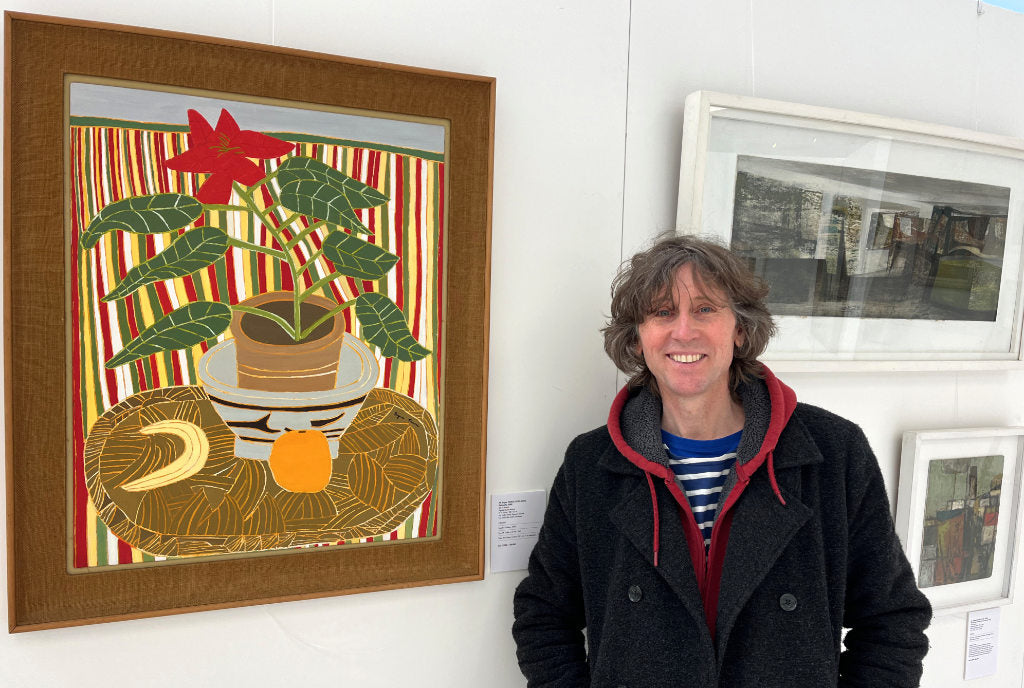
Above: Cornish artist John Dyer (b 1968) pictured next to a Bryan Pearce (1929 - 2007) still life painting. John Dyer's paintings are a continuation of the historic naïve genre of art that Cornwall is so famous for. The paintings of Alfred Wallis (1855 - 1942), Bryan Pearce (1929 - 2007), Joan Gillchrest (1918 - 2008), Roger Hilton (1911 - 1975), Fred Yates (1922 - 2008) and John Dyer (b 1968) are all highly investable.
As an alternate pathway to the art market, art funds and mutual funds present substantial investment opportunities. An art fund is a collective investment scheme in which multiple investors participate in the returns generated from a carefully selected portfolio. Unlike mutual funds, which are subject to regulation and have defined investment limitations, art funds are not bound by specific investment restrictions.
The management of art funds is typically entrusted to professional art investment management or advisory firms, which receive a management fee and a portion of the returns generated by the fund. Some of the leading art investment funds known for their strong performance are:
N.B.The John Dyer Gallery does not endorse or profit from external links you may follow from this article, but they are provided for your own independent research.
The average return on investment for art funds varies, but generally falls within the range of 5% to 17% annually, but there is no guarantee and prices can fall as with stocks and other asset classes.
Fractional Ownership and Blockchain Technology
Fractional ownership, coupled with blockchain technology, offers investors ownership shares in high-value artworks, thereby broadening access to the art market. Fractional ownership in art investment is a practice that enables multiple individuals to collectively own a portion of a specific artwork, thereby dividing the ownership into smaller shares.
The benefits of engaging in art investment through fractional ownership include the diversification of investment portfolio and the potential for returns without the need to spend a large amount. However, drawbacks encompass lack of control, restricted liquidity, substantial fees, and the potential for fraud.
Summary
Investing in art offers a unique opportunity to diversify your portfolio with tangible assets that can appreciate in value. From buying original artworks to investing in art funds, there are numerous strategies to explore. Understanding the art market, identifying potential investment opportunities, mastering the art of buying paintings, and effectively protecting and managing your art investments are all crucial to successful art investment. With alternative investment options such as art funds and fractional ownership, the art market becomes more accessible than ever. So, why not merge your passion for art with your financial future?
Invest in Original Contemporary Paintings Online
Frequently Asked Questions
Are paintings worth investing in?
Yes, paintings can be a valuable investment, especially if you set clear goals, do thorough research, and seek professional advice. They can add value to your portfolio and estate for generations to come. Cornish art has a strong history of being investable.
How do I start investing in art?
To start investing in art, you can visit online auctions, online art galleries such as JohnDyerGallery.com, attend art fairs, or consider using a fractional platform such as Masterworks to acquire shares of art. Happy investing!
What paintings to invest in?
You should consider investing in paintings by blue-chip artists like Pablo Picasso, Vincent van Gogh, or Andy Warhol, as their artworks tend to appreciate in value over time, providing a relatively safe investment option. However investing in contemporary Cornish paintings can bring a lifetime of enjoyment to your home.
Are paintings profitable?
Yes, paintings can be profitable due to their widespread appeal among art enthusiasts and collectors. However, profitability depends on various factors such as the competitiveness of the art market so be aware that prices can also fall and you can lose your investment as with any asset class.
What makes art a unique investment?
Art is a tangible asset that offers aesthetic enjoyment and has the potential to increase in value over time, making it a unique investment option. Cornish art is a particularly good example of this
